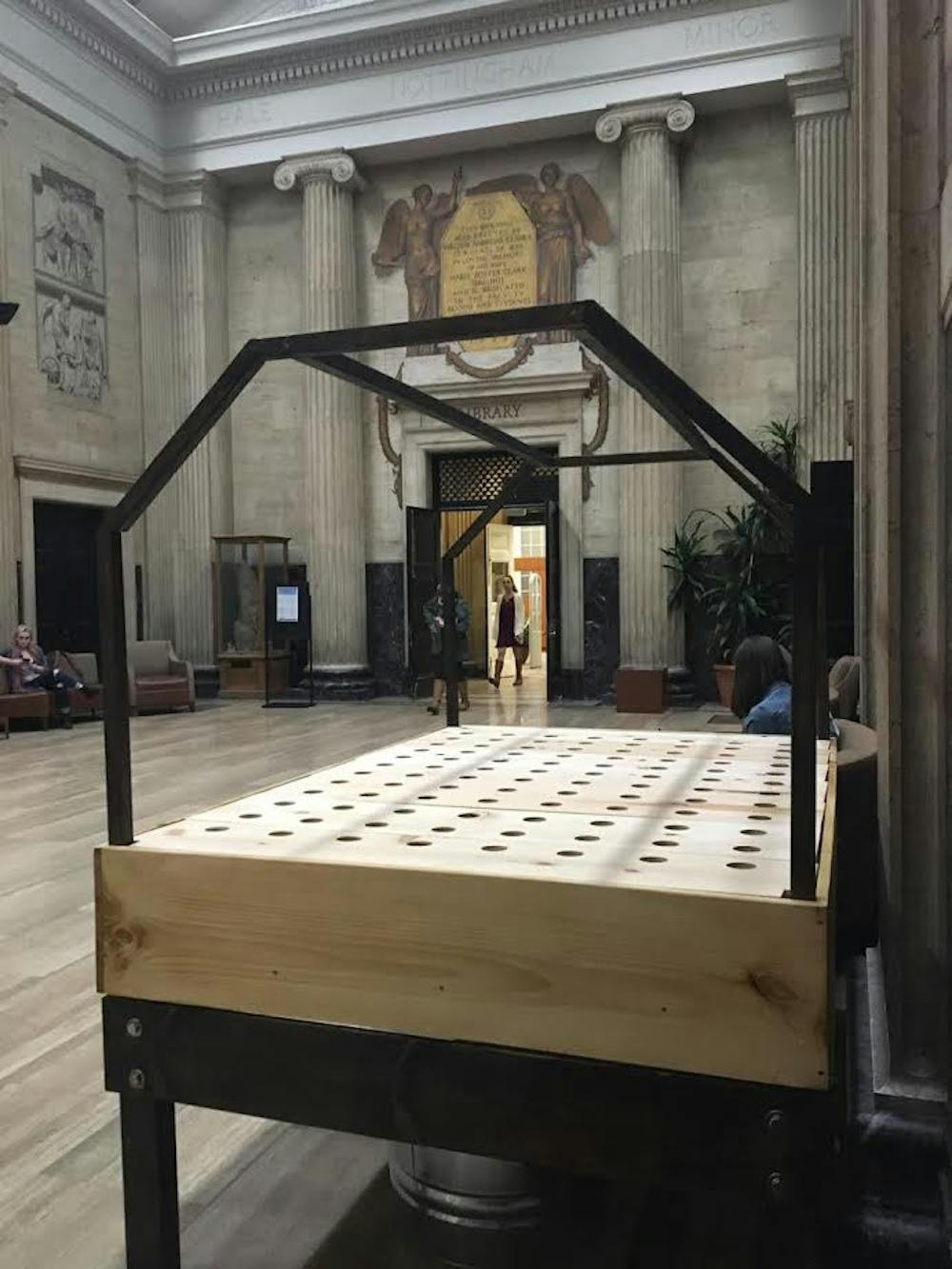A team of students, led by fourth-year College student Alexander Olesen, installed five hydroponic farming system displays Monday in Observatory Hill Dining Hall, Newcomb Dining Hall and Clark Hall, launching the University’s largest-ever sustainability initiative.
Olesen was first introduced to hydroponic farming — a method of growing plants typically in production towers with nutrient solutions in water instead of soil — through a class in the McIntire School of Commerce.
“The class actually had nothing to do with the environment,” Olesen said. “But one of the case studies we did was on hydroponic farming and how sustainable it was. And I loved that idea so I was basically like ‘I want one.’”
Olesen, however, could not find an acceptable purchase option for the apparatus. His objective then became to create a smaller, refined hydroponic system convenient for home use.
“I looked online, and everything was so expensive and so complicated,” Olesen said. “It’s done a lot industrially, but no one’s tried to crack it at the home use level. Learning more about it, I was like ‘this stuff shouldn’t be that way.’ So I went home and decided I could do it.”
After finalizing his design at the beginning of the fall semester, Olesen formed a team with three other University students through HackCville to build a functional prototype. Soon thereafter, he applied and received support from the Green Initiatives Funding Tomorrow. This supplied Olesen with $6,500 — the largest amount ever given to a student — to construct these systems.
“The system has a six-by-four feet area, and the idea of these systems is that they produce enough yield that you could fit 94 plants on one system,” Olesen said. “What we’ve also done is automated all of the technical measurements — pH, electrical conductivity and temperature — so, unlike other systems, it takes away all [of] the technical problems. You just read a screen, add your nutrients and go. So it’s this semi-automated hydroponic system.”
In addition to precisely calculating and automating the mechanical environment, Olesen and team members also sought to find a first-rate light source. LED Grow Lights met their expectations.
“The LED Grow Lights emit the right wavelength for photosynthesis, so it’s like it’s constantly a sunny day for the plants,” Olesen said. “Along with perfect concentration, the perfect amount of nutrients for the plant’s optimum growth is dissolved in water at the right conductivity … the metaphor I like to use is that it’s like an IV drip to the plants; they’re loaded up on nutrients, growing 24/7.”
With such optimal environments, plants grow rapidly in hydroponic systems.
“Hydroponics itself uses 90 percent less water than conventional agriculture and produces 10-times the yield as conventional farming and soil,” Olesen said. “So you don’t use soil — you dissolve nutrients in water. And all the food can be produced without GMOs, pesticides and inorganic fertilizers.”
Olesen hopes his sustainability initiative will move beyond these hydroponic system displays, inspiring students to think about the future of food production in general.
First-year College student Sydney Williams believes these hydroponic systems have increased her knowledge pertaining to sustainability issues and preservation efforts.
“The idea of possibly having a garden in my own home wasn’t an idea I had before,” William said. “But now that I see what positive effects this project could have, I think it’s definitely a possibility.”
In the future, Olesen intends to bring his project into people’s homes. To do this, he wants to create a company selling these hydroponic farms and to receive enough funding to supply families with these gardens, allowing them to grow food sustainably year-round.
“Every house comes with a fridge and an oven,” Olesen said. You wouldn’t think twice about spending thousands of dollars on those appliances. Why shouldn’t you just have a plug-and-go home appliance that grows all your fresh vegetables? To have these microfarms in houses would pretty much give a new meaning to farm-to-table. That’s the future.”







